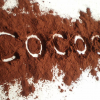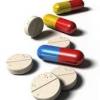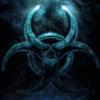If you go back and read the research I posted, you'll see that dopamine has many effects in the brain and cAMP/CREB triggered LTP is just one particularly interesting one that this stack is tweaking to be more sensitive. The theory I have is that normally it would take a lot of dopamine to trigger the same effect, but any mechanism of stimulating that much dopamine would lead to all kinds of negative side effects, especially in the long run. So now, when taking a relatively small amount of Phenylalanine or Tyrosine, I can stimulate this pathway without the excessive dopamine side effects it would normally take to trigger this pathway, especially over time as the body downregulates receptors to adjust to the increased dopamine influx.
[...]
Anecdotally, the effects from the Quercetin last for at least 24 hours and peak about 12 hours in. It has a very long half life or it generates a lot of PDE inhibition and thus a lot of cAMP which may have a long half life. Artichoke is much more mellow and seems to have a shorter half life. There are definitely some negative effects when I take too much of this stack. They pass after a few hours and I can usually avoid them by lowering the dosage. I do not re-dose later in the day as the effects build for quite a long time, especially the Quercetin.
That's what I've gathered as well, but with all the amphetamine freaks out there that have been looking for potentiates for years and years, it seems like someone would have already stumbled upon our little secret. I know that others have gotten close (actually, there are several studies on the effects of rolipram + stimulants), but of all I've research over the past year, I don't remember this combo being mentioned on any forums I've seen. By contrast, I've seen memantine + adderall mentioned everywhere.
What effects are you seeing at ~24 hours out? I've noticed an increase in morning wood(around ~22 hours later), but that could be from the increased Testosterone that the Forskolin is supposed to cause.
I usually take the stack about 10:30am. In the late evenings(8-9pm), when I sit down to veg out a bit, my blood pressure goes up a bit. I start getting the big "thump thumps" in my chest. By the time I get to work (11pm), it balances out. I then work a 4 hour, physically intensive job. I usually take a curcumin capsule before going to work to help with muscle inflammation, which works well.
Hmmm, Just tried 500mg of tyrosine by itself and didn't do anything but increase pressure in center of my head and frontal lobe, it also made me a little sleepy and was a little bit harder to concentrate. 1/2 an hour later I took 2 artichoke pills and about 25mg forskolin and I had no results with that either. This is really weird why I don't react to many things/nootropics, I am currently 1 week into LDN if it makes any difference and am experiencing a little bit of energy increase but also unrefreshing sleep, but then again I've had unrefreshing sleep for years. Could this sleep issue have anything to do with my reaction with the CILTEP stack?
Tyrosine by itself has never done anything for me. Once, I took 3 grams on an empty stomach and got my bp to go up. No discernible mental effects though.
I bought some L-Tyrosine to try with the CILTEP stack. I tried 2 grams this morning on an empty stomach, with 20mg Forskolin and 800mg Quercetin. It helped me wake up a little bit, but I didn't notice an increase in focus until I drank an energy drink with plenty of caffeine. I still plan to play around with dopamine stuff, since I really want to drop the amphetamines (I lose my insurance coverage soon, anyway).
From what I can find (http://www.ncbi.nlm....pubmed/20657266) it looks like pycnogenol is an anti-oxidant that has positive effects on dopamine metabolism. I've been taking this for a while as it does help me concentrate better on work.
I've been meaning to try this out for a long time. Any recommendations?
BTW, since all of you are asking, here are a list of supplements that interact with dopamine that I have used over the years and ones that I have specifically avoided:
Catuaba - Interesting Brazillian herb. Affects Dopamine. (http://www.ncbi.nlm....pubmed/19815648)
L-Phenylalanine - Essential amino acid . Nice and predictable for long term use (http://en.wikipedia....L-phenylalanine)
L-Tyrosine - Non-essential amino acid, can sometimes be unpredictable (http://en.wikipedia.org/wiki/Tyrosine)
Pycnogenol - Good anti-ADHD dopamine affecting brain anti-oxidant (http://www.ncbi.nlm....pubmed/20657266)
Gingko - Increases Dopamine. (http://www.ncbi.nlm....pubmed/20105177)
Caffeine - The old standby
Guarana - Similar to Caffeine (http://www.ncbi.nlm....d?term=20845263)
I specifically avoided
L-DOPA (in Mucunia Pruenens) - This has shown to cause bad side effects with long term use (e.g Tardive Dyskenesia)
Yohimbe - Made me feel like I was having a caffeine overdose for about 8 hours.
Yohimbe is terrible. I made the mistake of taking a double dose the first time I tried it. I had to sleep it off because I felt nauseous and I felt like my heart was going to explode. Yohimbine HCL, however, is a stimulant that worked very well for me. I'd like to do more research on it. If anyone decides to try it, just make sure you get the Yohimbine HCL only that has none of the other parts of the yohimbe plant in it.
I might have to try this Catuaba, as well.
How about Schizandrol A?
PubmedEffects of schizandrol A on monoamine neurotransmitters in the central nervous system.
[Article in Chinese]
Zhang L, Niu X.
Source
Institute of Materia Medica, Beijing.
Abstract
Schizandrol A (2',3',4',1",2",3"-hexamethoxy-6, 7-dimethyl-1,2,3,4-dibenzo-1,3-cyclooctadien-6-ol) is one of the effective components in the dried fruit of Schizandra chinensis Bail. Previous studies have found that schizandrol A exerts inhibitory effects on the central nervous system (CNS). For the purpose of elucidating the mechanism of inhibition, the concentrations of monoamine neurotransmitters and their metabolites in rat brain and the effects of schizandrol A on some receptors were determined by the ion-pairing reversed-phase liquid chromatography with electrochemical detection method and competitive binding assay. In the neurotransmitter studies, significant elevations of dopamine and its metabolite DOPAC (in striatum) and DA (in hypothalamus) were observed after i.p. administration of 50 mg/kg or 100 mg/kg of schizandrol A. But the receptor binding experiments showed that schizandrol A had no affinity for dopamine D1 and D2 receptors. Serotonin receptors and alpha 1-,alpha 2-adrenergic receptors, and it did not affect the binding of dopamine to dopamine D1 or D2 receptors. These results indicate that the inhibition exerted by schizandrol A on the CNS may be related to the dopamine system, and the increase of dopamine turnover has nothing to do with dopamine receptors. The concentrations of the norepinephrine metabolite MHPG and the serotonin metabolite 5-HIAA showed changes in rat striatum and hypothalamus after schizandrol A treatment, but norepinephrine and serotonin levels were unaffected.
Edited by zrbarnes, 19 May 2012 - 07:01 PM.






















































